DENIS JUNEAU
(1925-2014)
JEAN GOGUEN
(1927-1989)
et plasticiens de Montréal
Nous recherchons les oeuvres de Denis JUNEAU et Jean GOGUEN - contactez-nous pour vendre vos oeuvres !
1956 – 1960 : LES SECONDS PLASTICIENS
Les seconds Plasticiens n’ont jamais formé un groupe officiel. L’expression permet de faire la distinction entre la peinture des Plasticiens de 1955 et la géométrie plus rigoureuse inaugurée par Guido Molinari et Claude Tousignant dès 1956. Avec ces derniers, nous retrouvons Louis Belzile et Fernand Toupin – des Plasticiens de la première heure, qui continueront d’explorer l’abstraction géométrique jusqu’à la fin des années 1950 –, de même que Fernand Leduc, automatiste réorienté vers la géométrie, qu’il rehausse toutefois de couleurs saturées.
Denis Juneau et Jean Goguen sont aussi associés à cette seconde génération de Plasticiens. De retour à Montréal en 1956, après des études en design contemporain en Italie, Juneau adopte un vocabulaire formel strict, à base de motifs circulaires – cercles entiers, demi-cercles et quarts de cercle – de diverses tailles. Quant à Goguen, il soutiendra toujours avoir découvert la géométrie par hasard, en remarquant « un petit carré blanc » enchâssé dans la toile gestuelle en noir et blanc à laquelle il travaillait alors. Tous deux s’intéressent également au rapport entre l’art et la société.
À la suite du peintre Piet Mondrian, les seconds Plasticiens structurent leurs toiles en contrebalançant les masses, à la recherche d’équilibre dans la composition. Ils participent ensemble à la mémorable exposition Art abstrait, présentée à l’École des beaux-arts de Montréal en 1959.
Vie des arts, 44, 1966 Le dynamisme des plasticiens de Montréal
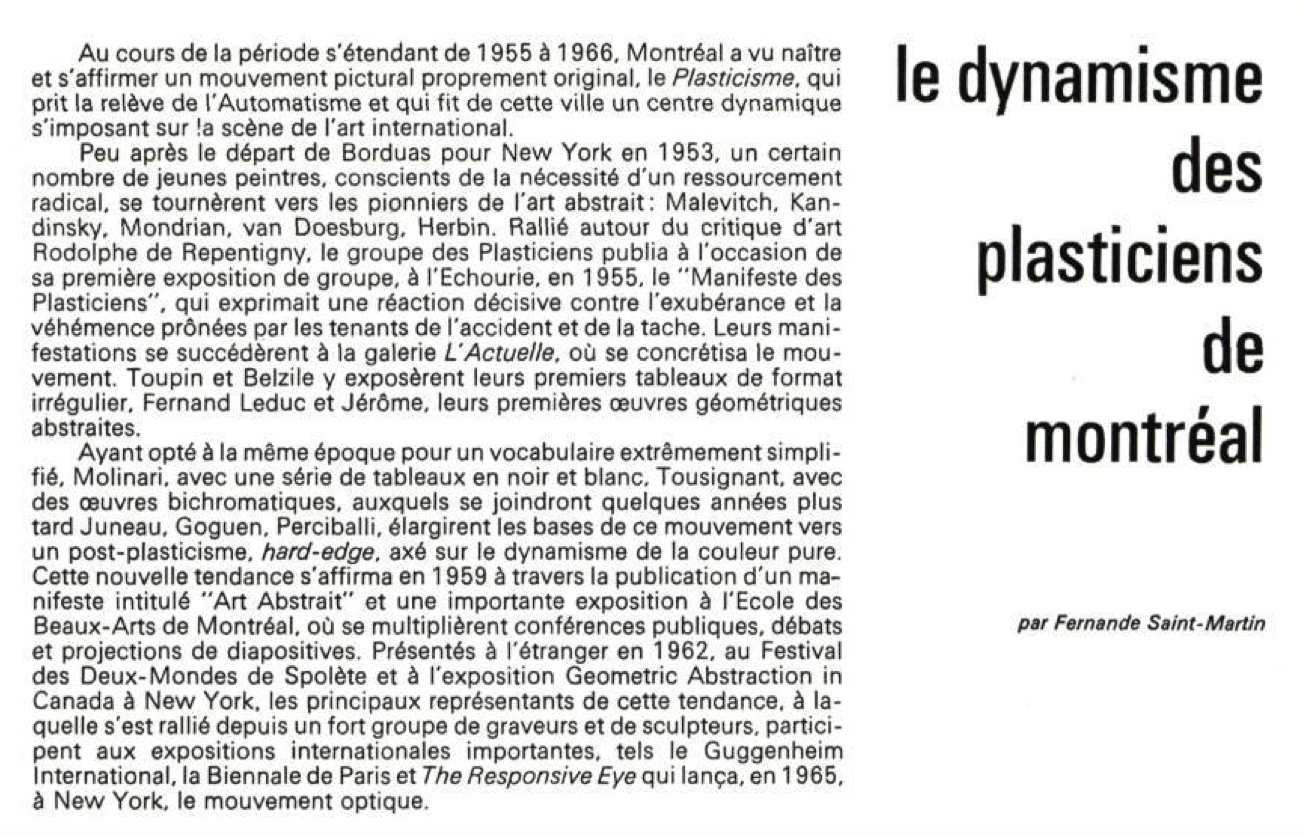
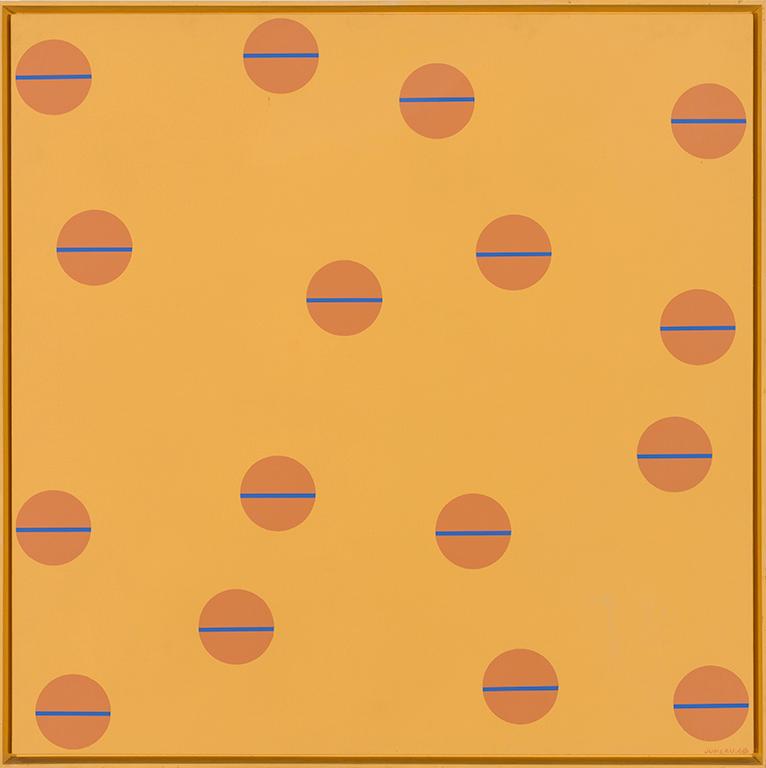
Denis JUNEAU (1925-2014)
Format: 44 x 44in
Acrylique sur toile
1968
VENDU / SOLD
Si, à la vue d'un tableau de Molinari, ce qui importe c'est la conscience de l'espace-temps fictif, créée par le regard du spectateur conditionné par certains rythmes sériels de base au niveau de la couleur et de l'organisation topologique; si, à la vue d'un Tousignant, c'est le mariage de toutes sortes de petites rythmiques aléatoires "stochastiques", de la couleur dépendant, elles aussi, de l'oeil du spectateur, mariage à la grande rythmique générale centripète-centrifuge des bandes circulaires, ce qu'il importe de voir avec Goguen, c'est la relativité du dynamisme de chaque élément du tableau en rapport avec l'ensemble, relativité tant au niveau de la forme que de la couleur. Chaque forme et couleur en se modifiant tour à tour crée diverses rythmiques qui conditionne la lecture du tableau.
- Yves Robillard, " Jean Goguen et le "contenant coloré", La Presse, mars 1968
Jean GOGUEN (1927-1989)
Acrylique sur toile
série: "Dynamisme translucide"
1968
Format 48x48 pouces
Prix: 12 500$
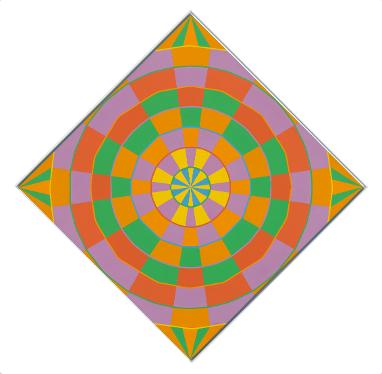
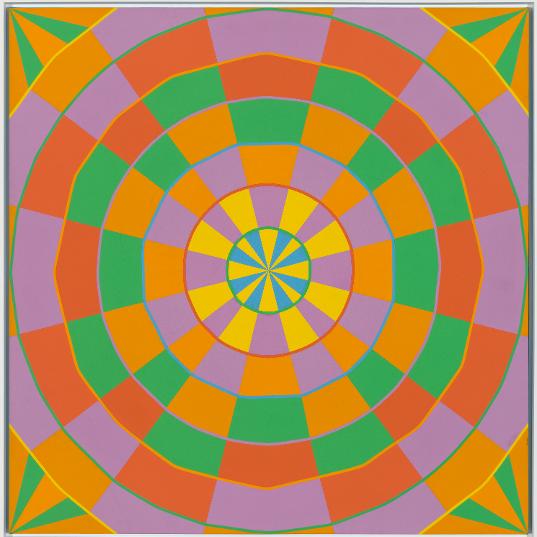
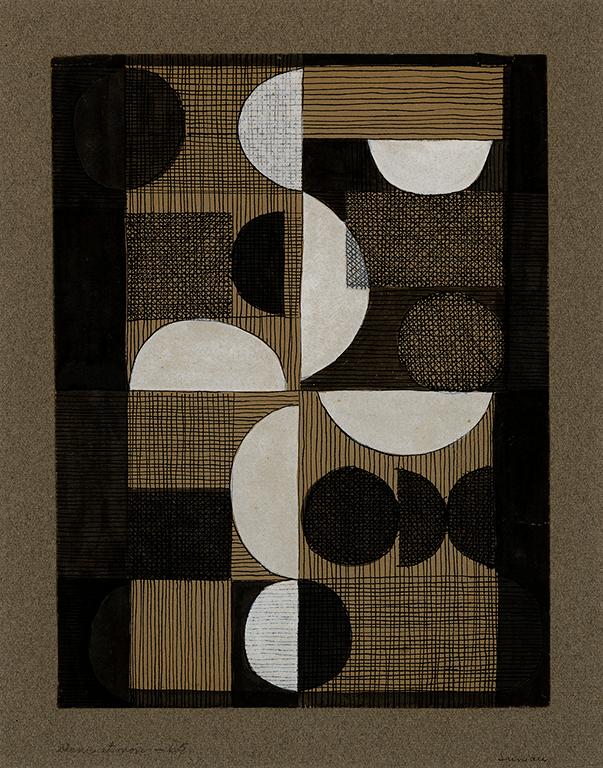
Denis JUNEAU (1925-2014)
"blanc et noir"
Format: 12 x 8 3/4in
Encre et gouache sur papier
1965
VENDU / SOLD
Denis JUNEAU (1925-2014)
"entre courbes et droite"
Format: 12 x 8 3/4in
Encre et gouache sur papier
1962
VENDU / SOLD
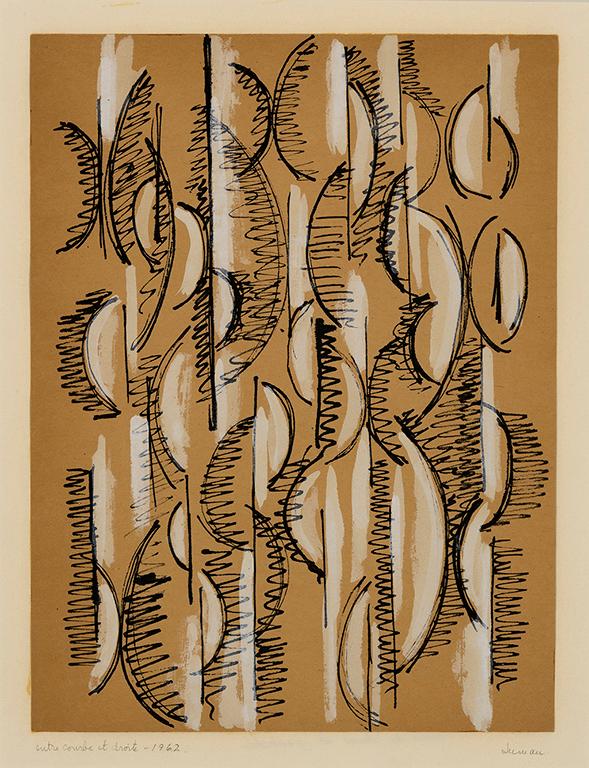
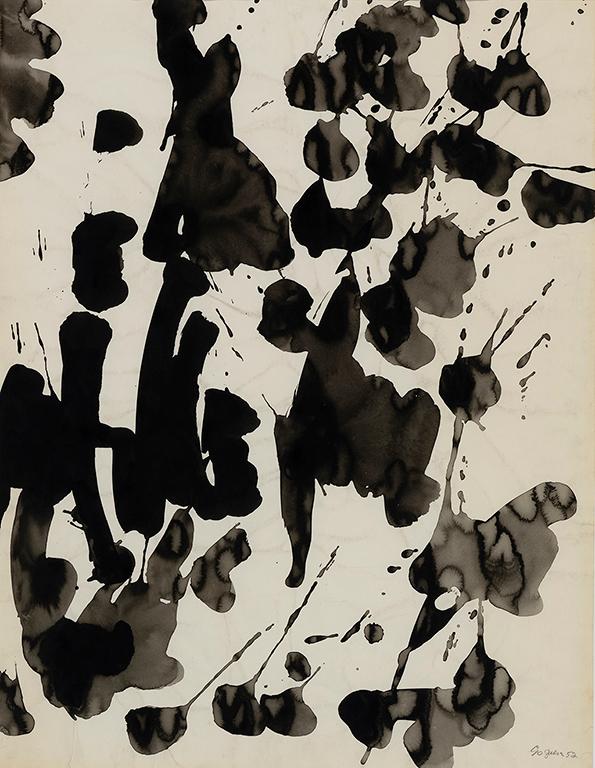
Jean Goguen (1928-1989)
encre sur papier
Format: 28 x 22 in
1952
VENDU / SOLD
Jean Goguen (1928-1989)
encre sur papier
Format: 25 x 39 in
1953
VENDU / SOLD
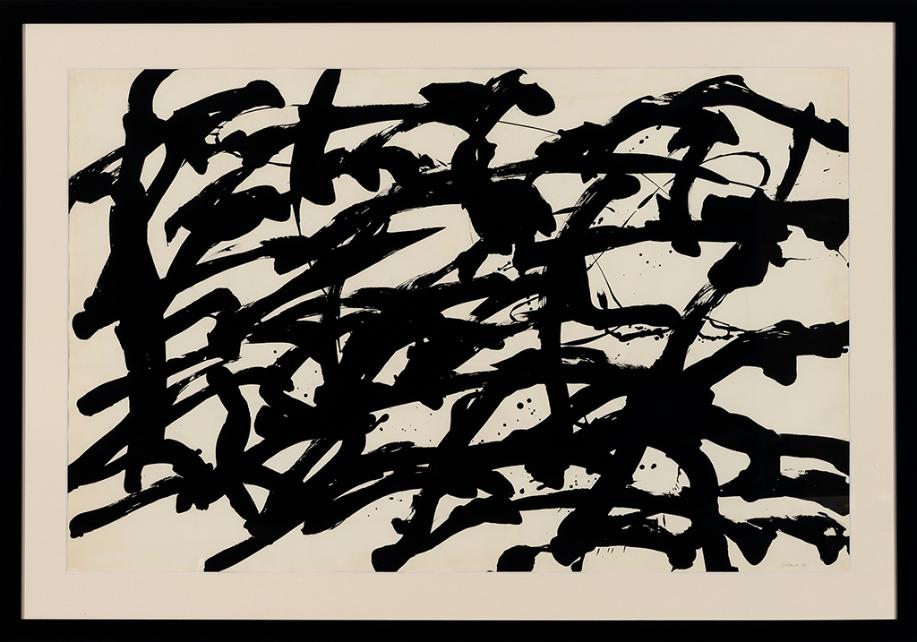
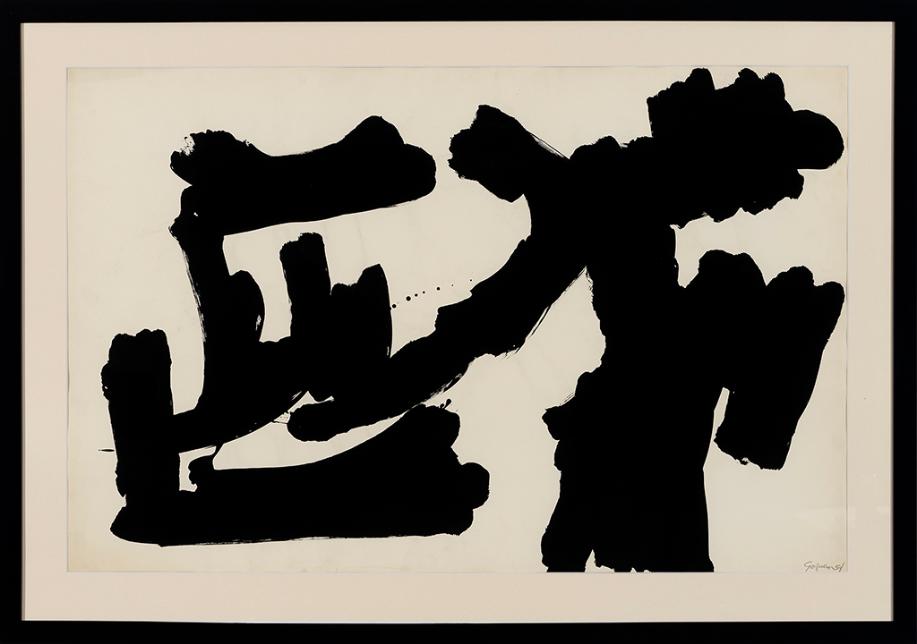
Jean Goguen (1928-1989)
encre sur papier
Format: 25 x 39 in
1954
VENDU / SOLD
Denis JUNEAU (1925-2014)
Format: 44 x 44in
Acrylique sur toile
1968
VENDU / SOLD
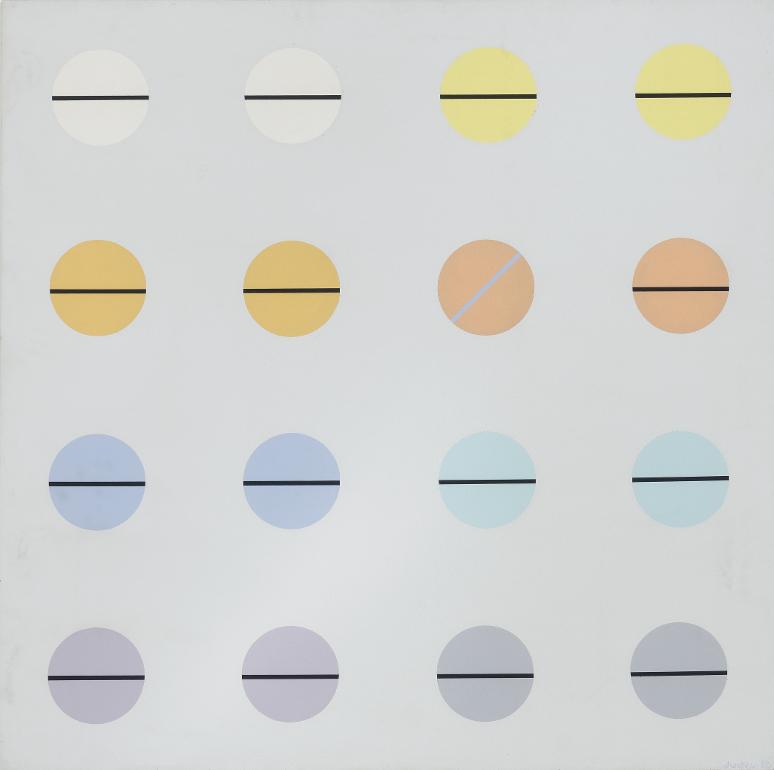
Denis JUNEAU (1925-2014)
"Ombres"
Format: 20 x 20 in
Acrylique sur toile
1974
VENDU / SOLD
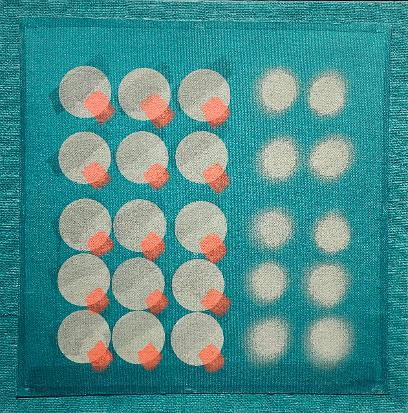
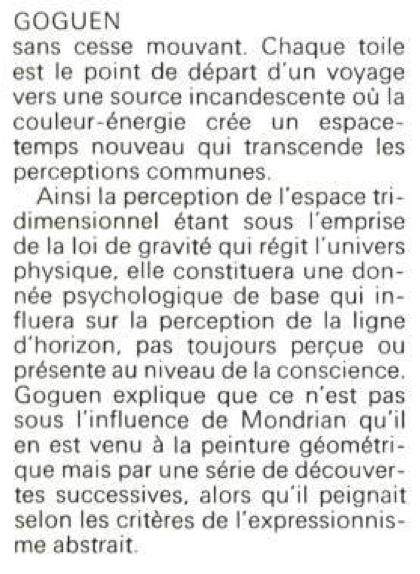
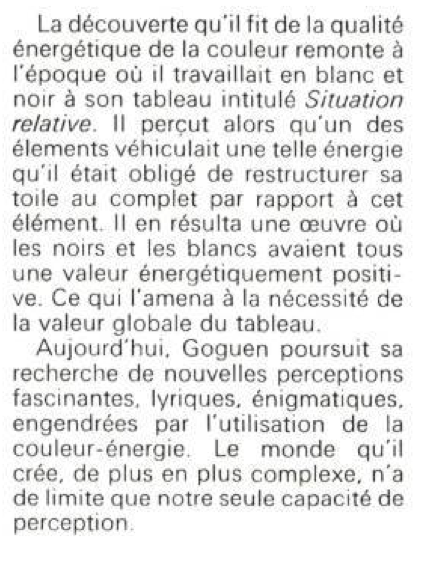
Jean Goguen (1928-1989)
collage / acrylique sur papier
Format: 18 x 20 in
1962
VENDU / SOLD
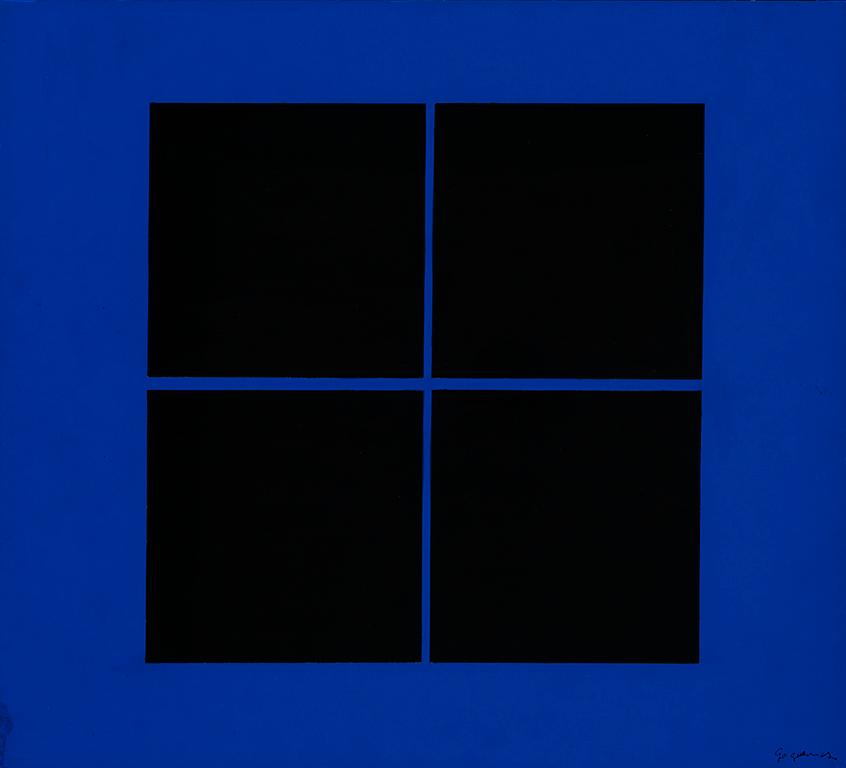
Jean Goguen (1928-1989)
"collage n.o. 1"
collage / acrylique sur papier
Format: 18 x 20 in
1962
Galerie du Siècle, Montreal
Prix: 2 500$
Jean Goguen (1928-1989)
"collage n.o. 2"
collage / acrylique sur papier
Format: 18 x 20 in
1963
Galerie du Siècle, Montreal
VENDU / SOLD
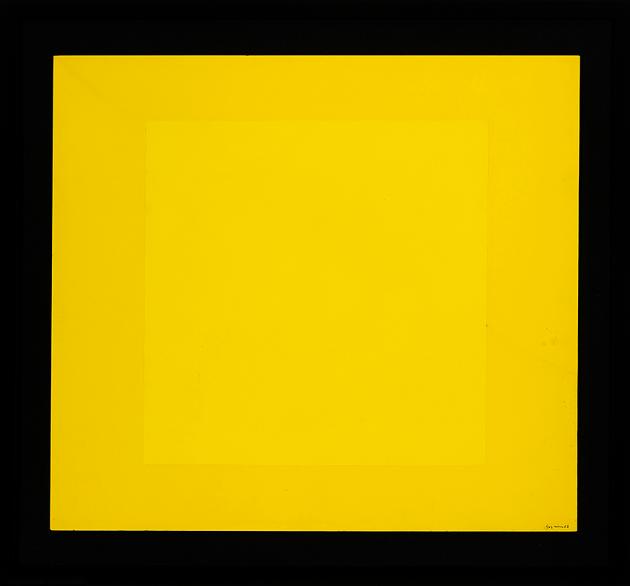
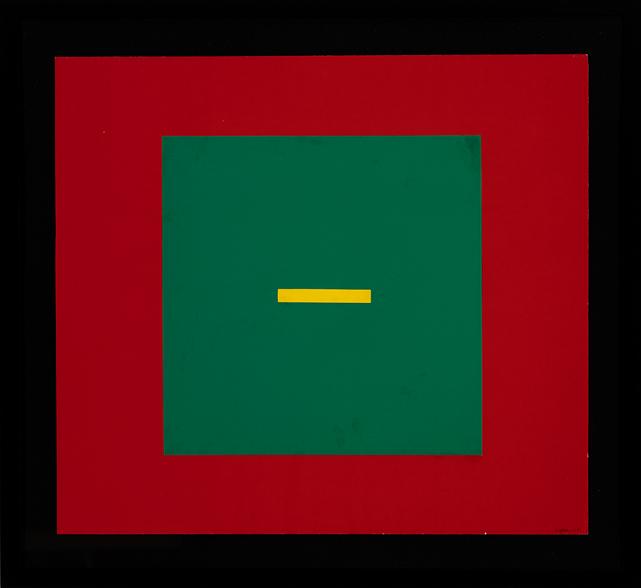
Jean Goguen (1928-1989)
Acrylique sur papier marouflé sur toile
tampons succession Jean Goguen au dos
Format: 44 x 33 in
vers 1962
VENDU / SOLD
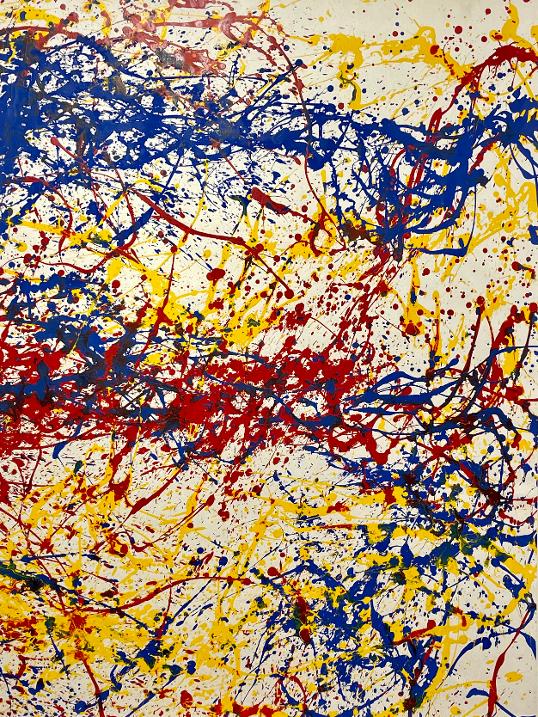
Vie des arts, 44, 1966 Le dynamisme des plasticiens de Montréal
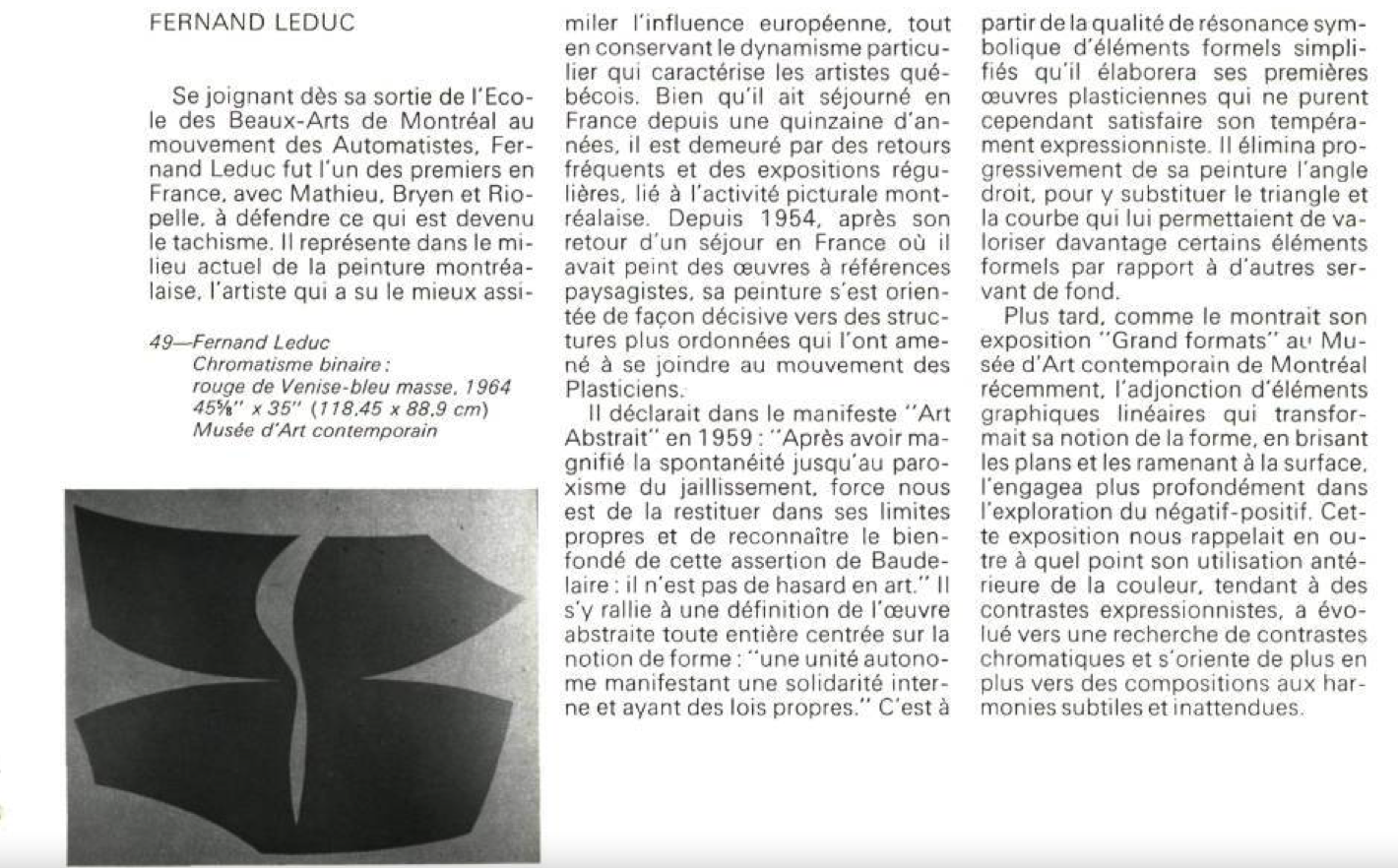
FERNAND LEDUC (1916-2014)
1967
Titre: érosion bleu rouge / CL24
mix media sur carton
Signé et daté devant, à droite en bas
Format: 51 x 36 cm / 20 x 14 pouces
VENDU / SOLD
Provenance:
Camille et Claire Leduc (Soeur de l'artiste) (avant 2001)
Collection Bernard Tanguay, St-Sauveur, Qc (2001-2020)
inscrit au dos "Attestation d'authenticité - F LEDUC 15/02/89"
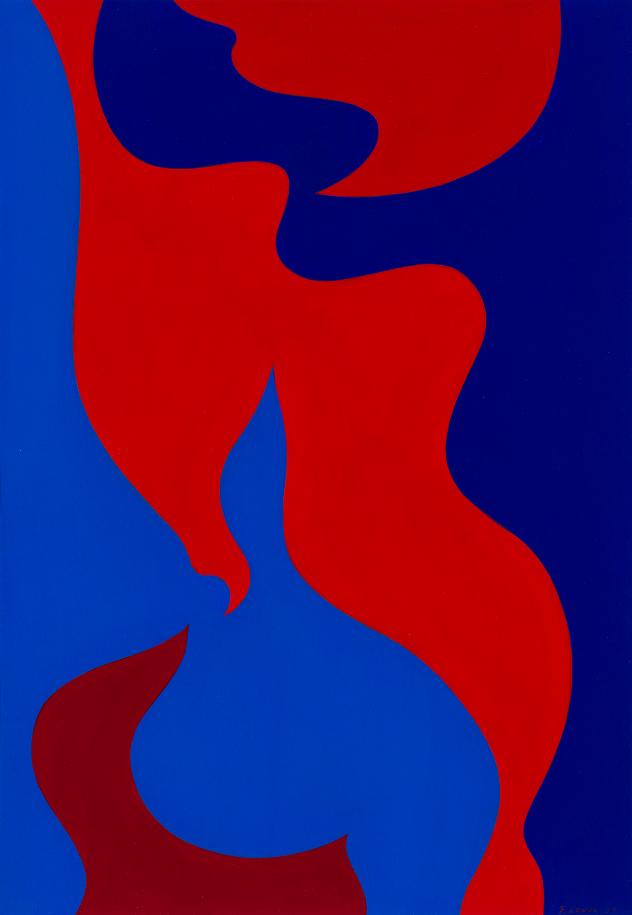
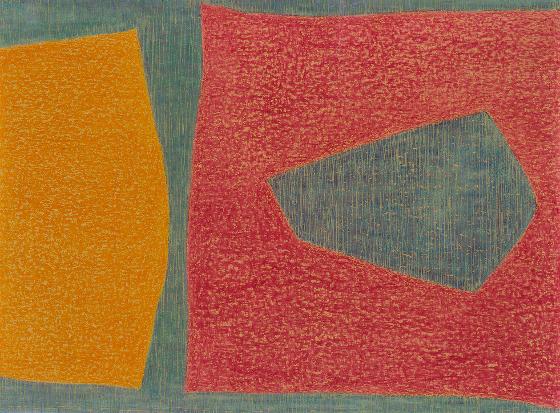
FERNAND LEDUC (1916-2014)
1964
Pastel gras
Signé et daté devant, à droite en bas
Format: 12 16 1/2 pouces
VENDU / SOLD
Vie des arts, 44, 1966 Le dynamisme des plasticiens de Montréal
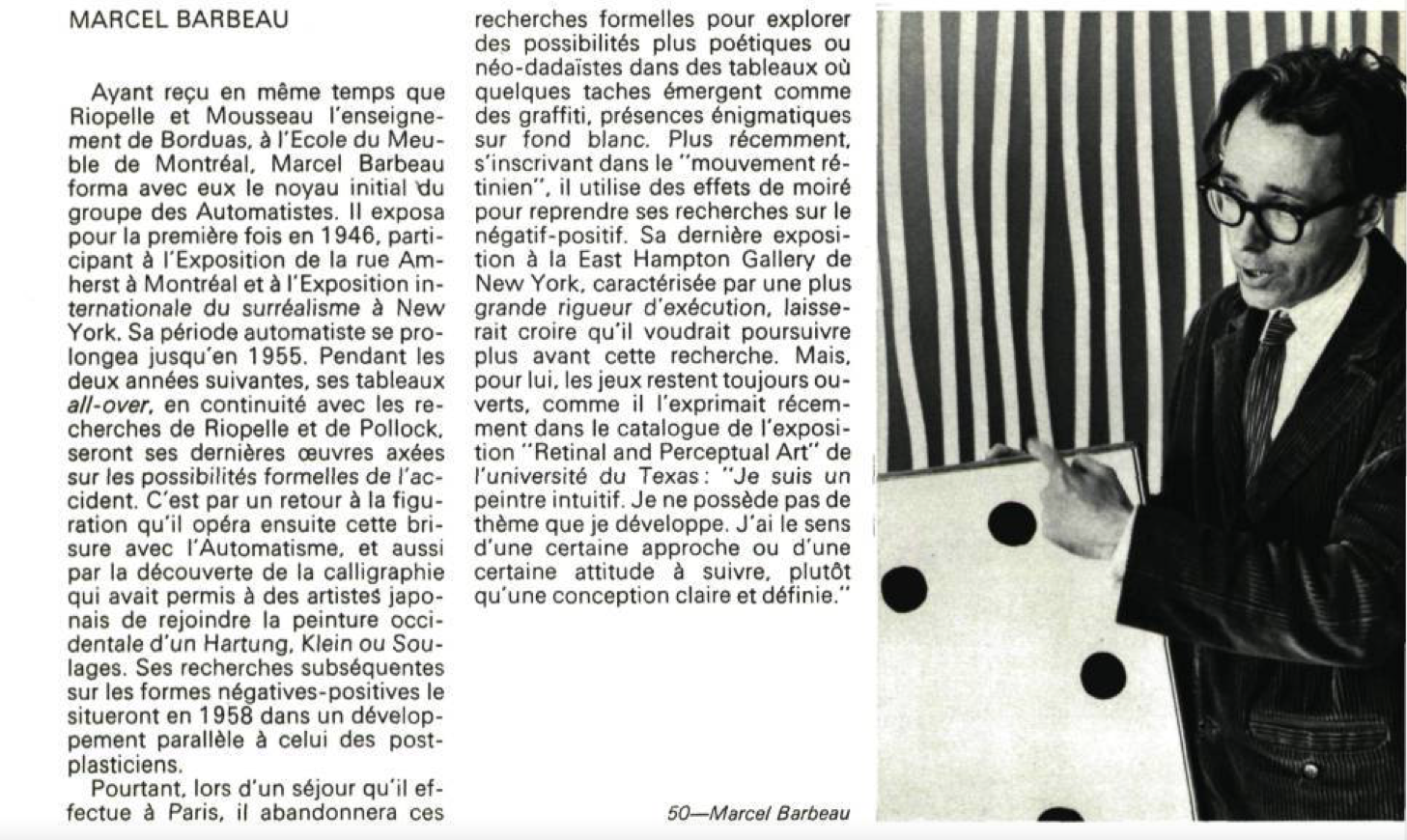
MARCEL BARBEAU (1925-2016)
VENDU / SOLD
1985
titre: Barocco
Signé, daté sur la base
Format: 16 1/2 x 16 1/8 x 9 7/8 in
Littérature
Marcel Barbeau : Échos et métamorphoses : Catalogue raisonné des peintures (1944-1971) et Catalogue raisonné des sculptures (1944-2000), Volume 5, Université Paris IV-Sorbonne, Institut d'art et d'archéologie, 2004, SC149.
Sculpted in August 1985, Barroco is the only sculpture that the artiste kept from a series of three small assembled pieces. Using scrap materials found at a bodybuilder shop in Baie-Saint-Paul, he continued his exploration of the effect of contrasting colors and shapes in sculpture. The irregular shape of the sheet metal reminds us of the large white paint stains find in his paintings from the 1980’s.
Barroco est la seule sculpture que l’artiste a conservée d’une courte série de trois petites sculptures d’assemblage produite au début aout 1985. Utilisant des matériaux de rebut, trouvé chez un carrossier de camions de Baie-Saint-Paul, il y poursuivit son exploration de l’effet de contraste de couleurs et de formes en sculpture. La découpe chantournée et irrégulière des tôles rappelle les larges taches de ses peintures du début des années quatre-vingt.
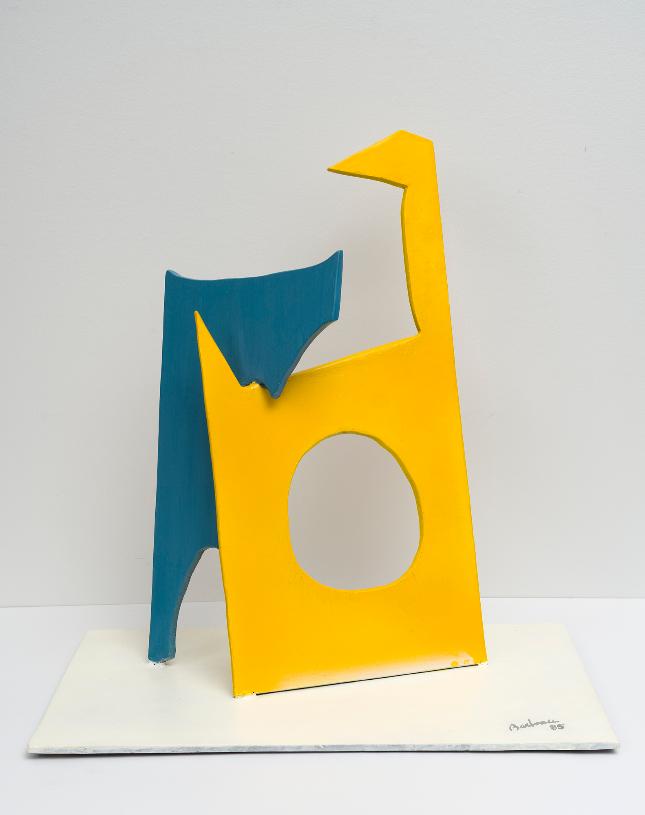
Archives
Artist Biography (York university)
JEAN GOGUEN
Jean Goguen became a Plasticien because he was convinced that form, colour and matter were the fundamentals of the art discourse; he insisted on incorporating chromatic lyricism in his geometric
structures.After working in a post-Automatiste manner, Jean Goguen turned to geometric abstraction sometime between 1957 and 1959. Goguen claimed, however, that unlike his fellow artists in Art abstrait, he was not following Mondrian nor did he have any other connections with European geometric abstraction, but had chanced upon geometry while painting much more gesturally. As he tells it, it was entirely by accident that “a small, white square” appeared on the black and white painting he was working on.“The dynamism of this little square was so intense that it forced me to totally restructure the canvas around it.This is when I became convinced of colour’s energizing quality and the value of geometry in abstraction.”59 However that may be, through a long series of large gestural black and white ink works on paper, which he executed during the 1950s, we can observe an increasing tightening of structure and a regularizing of gesture culminating in the monumental architectural rigour of his last drawings from 1959.
In his essay in the exhibition catalogue he spoke in the language of Neo-Plasticist utopia, intending his work to participate in the creation of a larger social good: “It is especially urgent to solicit the collective participation with the purpose of constructing a livable world.”60 In the 1960s Goguen had, as did Denis Juneau, a bout with Op art.
After working in a post-Automatiste manner, Jean Goguen turned to geometric abstraction sometime between 1957 and 1959. Goguen claimed, however, that unlike his fellow artists in Art abstrait, he was not following Mondrian nor did he have any other connections with European geometric abstraction, but had chanced upon geometry while painting much more gesturally. As he tells it, it was entirely by accident that “a small, white square” appeared on the black and white painting he was working on. “The dynamism of
this little square was so intense that it forced me to totally restructure the canvas around it. This is when I became convinced of colour’s energizing quality and the value of geometry in abstraction.”
Artist Biography (York university)
DENIS JUNEAU
In 1954, while visiting
the Carrara region in Italy to select marble for a traditional sculpture commission, he visited the Milan Triennial Exhibition of Decorative Arts and Modern Architecture. Inspired by the progressive spirit of contem- porary design, he decided to stay, enrolling in the Centro Studi Arte Industria in Novara, Italy.
He returned to Montreal in the fall of 1956 immersed in techniques of integrating art into the industrial environ- ment. Like the first Plasticiens, he was familiar with the ideas expressed in the journal Art d’aujourd’hui, which in 1956 reproduced one of his gouaches, Carré blanc (White Square). In his catalogue text in Art abstrait he spoke of the structural affinity between the problems that confronted the contem- porary professional in industry and manage- ment and the linear and spatial problems that were the purview of pure plastic art. In the mid-1950s his work was a cross between Arp’s Surrealist biomorphs from the 1930s and Matisse’s more recent collag- es, executed in flat bright optimistic colours. His 1955 study for a publicity poster for Mobil Oil shares the same formal clarity and design assurance. He soon settled into a stricter geometric vocabulary based predominantly on circle motifs—whole, halved, quartered and differently sized.
Denis Juneau pursued numerous pictorial investigations into optical effects and in-depth studies on colour transparency.
Juneau settled into a stricter geometric vocabu- lary based predominantly on circle motifs—whole, halved, quartered and different- ly sized. In a later interview he explained how “the circle presented itself to me as an ideal figure. As well as being the form most expres- sive of movement, the circle offered me the possibilities of unlimited transformation.”He laid out these circles, often organized in alignment with differently coloured orthogonal divisions of the canvas, in dynamic rhythmic relations across the picture surface.
Even if they are ultimately Synthetic Cubist images—they are transformed in a way no first Plasticien would have dared, seen through the up-to-date lens of geometric design principles. In a way often evocative of collage, the forms are fully declared, the colours bright and efficient, the mood assured, even when queried, as it is by the menacing opaque black portal shape that grabs foreground attention.
Juneau settled into a stricter geometric vocabu- lary based predominantly on circle motifs—whole, halved, quartered and different- ly sized. In a later interview he explained how “the circle presented itself to me as an ideal figure. As well as being the form most expres- sive of movement, the circle offered me the possibilities of unlimited transformation.”He laid out these circles, often organized in alignment with differently coloured orthogonal divisions of the canvas, in dynamic rhythmic relations across the picture surface.
